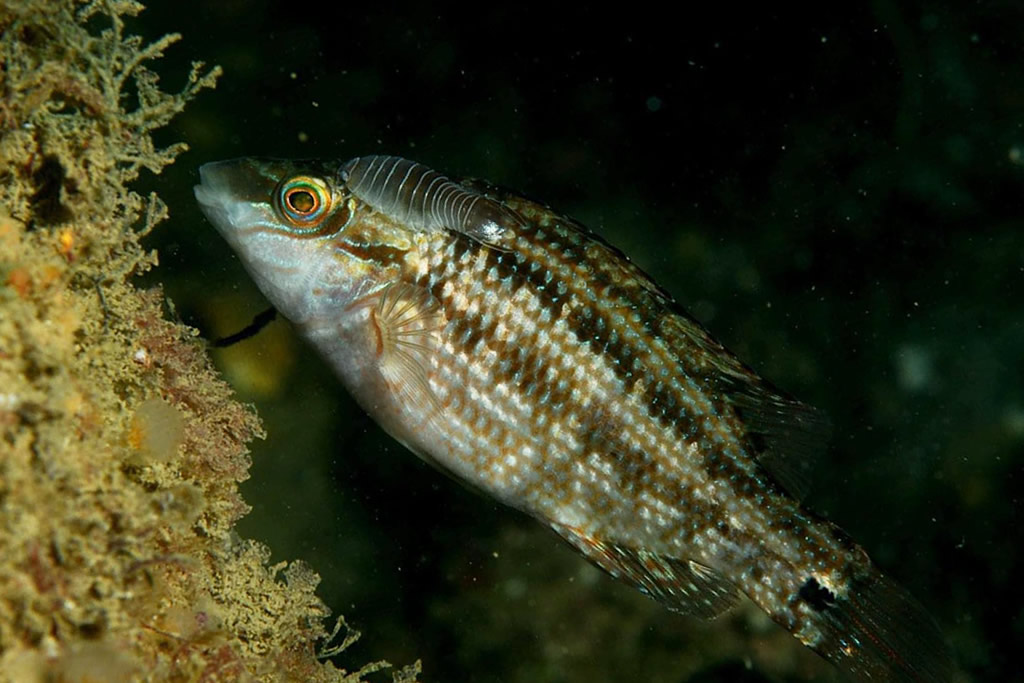Anilocra sp. Leach, 1818
Status:
Native
Identification
Anilocra are external parasites of fish which attach themselves to their hosts with sharp claws. Species in the genus can be distinguished from Nerocila orbignyi by their short coxal plates, the posterolateral angles of pereonites 2-6 not being extended, and by the head narrowing at the front to form a projection between the antennae.
Although two species of Anilocra have been recorded in the north-east Atlantic, A. frontalis and A. physodes, specimens gathered in British waters show mixed characteristics and have not yet been assignable to species (Horton & Baillie 2019). Identification to species is thus not possible even with good views and photographs, and records should be submitted only as Anilocra genus when specimens have not been retained and examined by an expert. Females up to 50 mm (A. physodes) and 35 mm (A. frontalis).
Distribution and Habitat
Essentially sublittoral, but often close to the intertidal zone so that they may be observed by shallow-water divers and anglers. They can also be found on fish in rockpools. Anilocra sp. have been recorded around the Channel Islands and on the south coast of England from Cornwall to Kent. Though typically found attached towards the head end of certain species of fish, e.g. Corkwing Wrasse (Symphodus melops (Linnaeus, 1758)), manca larvae and small males can be attracted to light traps.
References
Horton, Tammy & Charles Baillie. 2019. Cymothoid isopods in UK Waters. PMNHS Bulletin 11, 44-50.
Naylor, E. & A. Brandt. 2015. Intertidal Marine Isopods. Synopses of the British Fauna (New Series), No. 3. Field Studies Council, for The Linnean Society of London.
Links
World Register of Marine Species (WoRMS): https://www.marinespecies.org/aphia.php?p=taxdetails&id=146493
Aphotomarine: https://www.aphotomarine.com/isopoda_anilocra_frontalis.html
Ocean Biodiversity Information System (OBIS) distribution map (A. frontalis and A. physodes combined): https://mapper.obis.org/?taxonid=148659,146494







